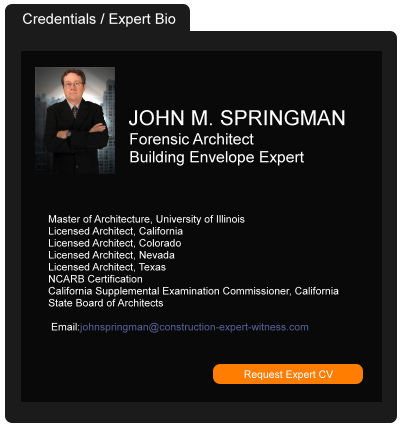Colorado Adopts Twombly-Iqbal “Plausibility” Standard
July 14, 2016 —
Jesse Howard Witt – The Witt Law Firm Blog, Acerbic WittLast week, the Colorado Supreme Court announced a dramatic shift in its rules of pleading, adopting the federal courts’ requirement that a claim must be “plausible on its face” to survive a motion to dismiss. Although seemingly subtle, this change transfers much more power to district court judges and weakens the right to a jury in civil actions.
For decades in Colorado, courts have held that a plaintiff’s complaint need merely provide a defendant with notice of the transaction that caused an alleged injury. Judges would not dismiss the complaint unless it appeared “beyond doubt” that the plaintiff could prove “no set of facts” which would entitle him or her to relief. See Davidson v. Dill, 180 Colo. 123, 131, 503 P.2d 157, 162 (1972), quoting Conley v. Gibson, 355 U.S. 41 (1957). This was rooted in the notion that the civil jury was the ultimate arbiter of disputed facts in American jurisprudence. Every party was entitled to have his or her “day in court” and present claims to a group of jurors selected from the community, rather than a judge appointed by the governor.
Reprinted courtesy of
Jesse Howard Witt, Acerbic Witt
Mr. Witt welcomes comments at www.witt.law
Read the full story... Read the court decisionRead the full story...Reprinted courtesy of
#5 CDJ Topic: David Belasco v. Gary Loren Wells et al. (2015) B254525
December 30, 2015 —
Beverley BevenFlorez-CDJ STAFFChapman Glucksman Dean Roeb & Barger attorneys
Richard H. Glucksman,
Jon A. Turigliatto, and
David A. Napper analyzed the above mentioned Belasco case, in which “the Second District Court of Appeal made clear that settlement agreements containing waviers of unknown claims in connection with a construction of a property, absent fraud or misrepresentation, will be upheld.” Glucksman, et al. explained that “the homeowner plaintiff had made a claim against the builder pursuant to California Code of Civil Procedure Section 896 (“Right to Repair”) and settled for a cash payment and obtained a Release of all Claims including for all known and unknown claims. The court held that homeowner’s subsequent construction defect claim was barred pursuant to the terms and conditions of the earlier release.”
Read the full story...
In another article on the subject,
Edward A. Jaeger, Jr. and
William L. Doerler of
White and Williams LLP concluded, “The Court of Appeal’s holding establishes that, despite the prohibition against the release of unknown claims set forth in section 1524 and the protections provided to homeowners by the Right to Repair Act, California homeowners can, in fact, release or waive claims against homebuilders for future, latent construction defects. To release or waive such claims, the language of any settlement agreement should be unequivocal.”
Read the full story...
Read the court decisionRead the full story...Reprinted courtesy of
Jinx: Third Circuit Rules in Favor of Teamsters in Withdrawal Case
July 28, 2018 —
Wally Zimolong - Supplemental ConditionsBad omen. Last week, I wrote about a Appeals Court decision that affirmed a contractor’s escape from an over $600,000 withdrawal liability assessment from the Laborers Union. The next day the Third Circuit (which covers PA, NJ, and DE) handed down a decision affirming a federal court’s decision to assess withdraw liability. This one shows the dark side of not reading and understanding your CBA.
The belligerents in the litigation were, Penn Jersey, a construction material supplier, and Teamsters Local 676. Their collective bargaining agreement contained a clause purportedly covering withdrawal liability. Specifically, the clause stated “should the Employer withdraw from the Agreement in the future, there will be no withdrawal liability. The CBA expired and Penn Jersey did not renew its agreement with the Teamsters.
Read the court decisionRead the full story...Reprinted courtesy of
Wally Zimolong, Zimolong LLCMr. Zimolong may be contacted at
wally@zimolonglaw.com
OSHA Joins the EEOC in Analyzing Unsafe Construction Environments
June 26, 2023 —
Cameron S. Hill Sr. - Construction ExecutiveConsistent with the Equal Employment Opportunity Commission's (EEOC) Strategic Enforcement Plan (SEP)
published in January 2023, which noted an increased focus on the construction industry as it relates to harassment and discrimination issues within the workplace and around hiring and the advancement of minorities, the Occupational Safety and Health Administration (OSHA) is following suit. At the end of March 2023, OSHA leaders announced another arrow in their quiver: OSHA has new authority through its Wage and Hour Division to issue certifications supporting applications for "U" nonimmigrant status and "T" nonimmigrant status visas.
Reasoning that workers' immigration status, social inequalities or differences in culture can cause them to fear retaliation for identifying unsafe work environments and criminal activity, such as trafficking, murder, blackmail, extortion and other serious crimes, Assistant Secretary of Labor for Occupational Safety and Health, Doug Parker
stated, "The Occupational Safety and Health Administration's top priority is to ensure workers are safe and can exercise their rights, regardless of their demographic or immigration status. A key part of that mission is expanding our work to combat workplace inequities that can create hazards and affect vulnerable workers who are likely to be exploited or victims of crimes. Our vision extends beyond setting standards, inspecting workplaces and providing training. Becoming a visa-certifying agency gives us one more tool in our wide-ranging efforts to better protect workers and their rights on the job."
Reprinted courtesy of
Cameron S. Hill Sr., Construction Executive, a publication of Associated Builders and Contractors. All rights reserved.
Mr. Hill may be contacted at chill@bakerdonelson.com
Read the court decisionRead the full story...Reprinted courtesy of
Open & Known Hazards Under the Kinsman Exception to Privette
February 15, 2018 —
Frances Ma & Lawrence S. Zucker II – Haight Brown & Bonesteel LLP Publications & InsightsGonzalez v. Mathis, 2018 WL 718528 confirms the difficulties a defendant will face when trying to overcome the Kinsman exception to the
Privette doctrine on a dispositive motion when dealing with an open and obvious hazard. There, a professional window washer fell off a roof while walking along a parapet wall constructed by the owner of a home.
The window washer filed suit against the homeowner and alleged three dangerous conditions on the roof: (1) the parapet wall forced those who needed to access a skylight to walk along an exposed two-foot ledge that lacked a safety railing; (2) dilapidated and slippery roof shingles; and (3) the lack of tie off points that would allow maintenance workers to secure themselves with ropes or harnesses. The homeowner filed a motion for summary judgment under
Privette v. Superior Court (1993) 5 Cal.4th 689 and its progeny which prohibits an independent contractor from suing his or her hirer for workplace injuries (
“Privette doctrine”).
There are two exceptions to the
Privette doctrine. First, a hirer cannot avoid liability when he or she exercises control over the manner and means in which a contractor does his or her work and that control contributes to the injuries sustained – known as the
“Hooker exception” (premised on the holding of
Hooker v. Department of Transportation (2002) 27 Cal.4th 198). Second, a hirer may be found liable if he or she fails to warn the contractor of a concealed hazard on the premises – known as the
“Kinsman exception” (premised on the holding of
Kinsman v. Unocal Corp. (2005)).
Reprinted courtesy of
Frances Ma, Haight Brown & Bonesteel LLP and
Lawrence S. Zucker II, Haight Brown & Bonesteel LLP
Ms. Ma may be contacted at fma@hbblaw.com
Mr. Zucker may be contacted at lzucker@hbblaw.com
Read the court decisionRead the full story...Reprinted courtesy of
Zoning Hearing Notice Addressed by Georgia Appeals Court
April 20, 2017 —
David R. Cook Jr. - Autry, Hanrahan, Hall & Cook, LLPThe Georgia Court of Appeals recently addressed the requisite notice of zoning proceedings that ultimately requested in a zoning decision. The key question was whether, after a properly noticed planning meeting, additional notice was required before the board’s formal vote that occurred three months later.
Read the court decisionRead the full story...Reprinted courtesy of
David R. Cook, Autry, Hanrahan, Hall & Cook, LLPMr. Cook may be contacted at
cook@ahclaw.com
Denial of Motion to Dissolve Lis Pendens Does Not Automatically Create Basis for Certiorari Relief
November 16, 2023 —
David Adelstein - Florida Construction Legal UpdatesA recent appellate decision out of Florida’s Sixth District Court of Appeal holds that a trial court’s denial of motion to dissolve a lis pendens does NOT automatically give a basis for a petition for a writ of certiorari. Generalized allegations of “irreparable harm” to support the basis for the petition for writ of certiorari are insufficient. Rather, the party moving for the petition MUST clearly demonstrate the irreparable harm; otherwise, the petition for writ of certiorari will fail.
A lis pendens has legal significance. It is a recorded document that notifies the world that there is a pending lawsuit dealing with the real property at issue. This is important because who wants to buy a piece of property that is subject to litigation – that would be a risky transaction!
In CPPB, LLC v. Taurus Apopka City Center, LLC, 48 Fla.L.Weekly D1837a (Fla. 6th DCA 2023), a dispute arose as to a real estate transaction. The owner sold a parcel to a buyer. The owner also owned three adjacent parcels. As part of the transaction, the buyer agreed to perform certain improvements to all of the parcels including those adjacent parcels owned by the owner. The owner deposited funds in escrow for purposes of its share of the improvements. A payment dispute arose regarding the improvements and the buyer sued the seller. The seller filed a counterclaim to rescind the transaction along with a recorded lis pendens on the parcel purchased by the buyer. The buyer moved to dissolve the lis pendens which the trial court denied. This prompted the appeal – a petition for a write of certiorari based on the trial court’s denial of the motion to dissolve the lis pendens.
Read the court decisionRead the full story...Reprinted courtesy of
David Adelstein, Kirwin Norris, P.A.Mr. Adelstein may be contacted at
dma@kirwinnorris.com
Insured's Failure to Challenge Trial Court's Application of Exclusion Makes Appeal Futile
November 15, 2022 —
Tred R. Eyerly - Insurance Law HawaiiThe Texas Court of Appeals affirmed the trial court's granting of summary judgment to the insurer because the appeal failed to challenge the exclusion under which the insurer found no coverage. Sosa v. Auto Club Indemn. Co., 2022 Tex. App. LEXIS 6520 (Tex. Ct. App. Aug. 30, 2022).
Sosa's house was damaged during Hurricane Harry on August 26, 2017. Sosa filed a claim with Auto Club. She reported that two feet of floodwater had entered her home, her roof was missing shingles and was leaking, and she had sustained interior damage. An adjuster estimated the cost to prepare the roof damage was $1,191.96, less that her deductible. Auto Club determined that any remaining damage was caused by flood water, which was expressly excluded from coverage.
On November 11, 2020, Sosa filed suit against Auto Club for breach of the policy. Among other things, she argued the adjuster spent minimal time at her home inspecting and was inexperienced. In its answer, Auto Club asserted Sosa's claim was time-barred by the statute of limitations. Sosa then filed an amended complaint and changed the date of the loss from August 26, 2017, to June 28, 2019.
Read the court decisionRead the full story...Reprinted courtesy of
Tred R. Eyerly, Damon Key Leong Kupchak HastertMr. Eyerly may be contacted at
te@hawaiilawyer.com


































































